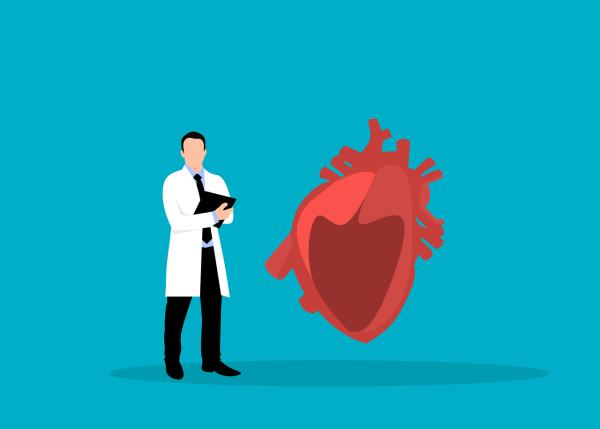“… 22,000 male US physicians 40 to 84 years of age were entered in the trial and randomly assigned to receive one of four treatments…After an average of 4.8 years of follow-up, the total number of myocardial infarctions among the physicians taking aspirin had been reduced by nearly half. Strokes, on the other hand, were slightly, although not significantly, more numerous among the aspirin takers. Aspirin had no effect on the total number of vascular deaths or deaths from all causes. When the numbers of important vascular events were combined (nonfatal myocardial infarctions plus nonfatal strokes plus vascular deaths from all causes), those receiving aspirin still had a significant 23 percent reduction in risk.”
- Aspirin For The Primary Prevention Of Myocardial Infarction New England Journal of Medicine
These were the opening words in a landmark study that propelled a tidal shift in primary care: making an aspirin a day keeps the doctor away good advice, at least concerning cardiovascular disease. By 2017, as reported in the Annals of Internal Medicine, roughly 30 years later, 23% of adults over 40 were taking a daily aspirin, which rose to nearly 50% in those over age 70.
That original report had more to say.
“Do the results now justify the widespread use of aspirin for the primary prevention of myocardial infarction? Any answer at this time must be tentative and carefully qualified. ….The trial results provide good reason to consider using aspirin in patients meeting those criteria, but they do not demonstrate the value and safety of aspirin in the general population - particularly in those at risk for hemorrhagic strokes or other hemorrhagic complications of aspirin therapy.” [emphasis added]
It was this risk-benefit calculation that the beneficial reduction in myocardial infarctions of “nearly half” was worth the risk of the “slightly, although not significantly, more numerous [strokes] among the aspirin takers” that set public health policy for nearly 40 years.
In the last several years, the numbers used to make the risk-benefit calculus have changed, and the widespread recommendation to use aspirin in the prevention of an initial heart attack greatly limited.
More contemporary studies [1] demonstrated a much smaller reduction in primary cardiovascular events overall, roughly 9% in ASCEND, 5% in ARRIVE, and 11% for APREE. This reduction in baseline incidence is the first of the takeaway messages: disease, even non-communicable diseases, are dynamic. There are many factors at play, including
- A more concerted effort in medicine to treat two of cardiovascular diseases’ most powerful risk factors, hypertension and elevated cholesterol.
- In 1988, the CDC reported that among Americans, “49.4 million (28.1%) were current smokers;” in 2022, that percentage ranges from 5% to 9%, depending upon the age group.
- And many of those at risk from earlier times have passed, creating a healthier cohort to analyze.
In the same time frame, the risk of stroke from aspirin has not necessarily risen as much as it has become better defined. All three studies documenting reductions in cardiovascular benefit also demonstrated increased episodes of bleeding in the group taking aspirin. In fact, the ASPREE study that looked specifically at those over age 70 found a 30% increase in major hemorrhage (gastrointestinal and intracranial bleeding) in the aspirin group compared to the control arm. An additional secondary analysis of the ASPREE data demonstrated no benefit for reduction in strokes but a 38% increase in intracranial bleeding, although the absolute percentages were small (1.1%).
And here is that second takeaway: the original data on aspirins' detrimental effects was an aggregate, blending the very low risk of the young with the increasing risk of the elderly. When you focused on specific groups, those aggregates were less meaningful, and particular groups of concern were identified. [2]
“Aspirin should be used infrequently in the routine primary prevention of ASCVD because of lack of net benefit.”
- 2019 ACC/AHA Guideline on the Primary Prevention of Cardiovascular Disease
In the face of changing risks and benefits, medicine’s guidelines changed. Those of the American College of Cardiology (ACC) suggested using aspirin “among select adults 40-70 years of age." The US Preventative Services Task Force (USPSTF) now recommends
“The decision to initiate low-dose aspirin use for the primary prevention of CVD in adults aged 40 to 59 years who have a 10% or greater 10-year CVD risk should be an individual one and recommends against initiating low-dose aspirin use for the primary prevention of CVD in adults 60 years or older.”
In all risk-benefit calculus, those who value potential benefits over harms choose treatment; those who value potential harms or burdens over benefits decide not to treat. We see this in the recommendation for low-dose aspirin to prevent primary cardiovascular events. Still, it is equally valid for more contentious issues, like masking and social distancing during the pandemic. Many will argue that, unlike the case of aspirin, when the calculus of risk-benefit changed, public health recommendations did not. But before we embrace that argument, we must also recognize that the data resulting in a change in cardiovascular care took years to collect, not a few weeks or months.
The takeaway from this aspirin saga? It’s a reminder that medicine isn't a one-size-fits-all affair and that when the facts change, so should your opinion. For medicine, where life and death are not hollow phrases, it sometimes takes longer than we want to be less uncertain, and all of our maladies are dynamically altered by time and circumstance.
[1] ASCEND, ARRIVE, and ASPREE
[2] Not to belabor this point, but this was equally true when considering myocarditis in those receiving COVID vaccinations. The aggregate showed no harm; a more focused look at young males demonstrates a small but real possible harm.
Source: The Saga of Aspirin in Preventing Heart Disease Medscape




